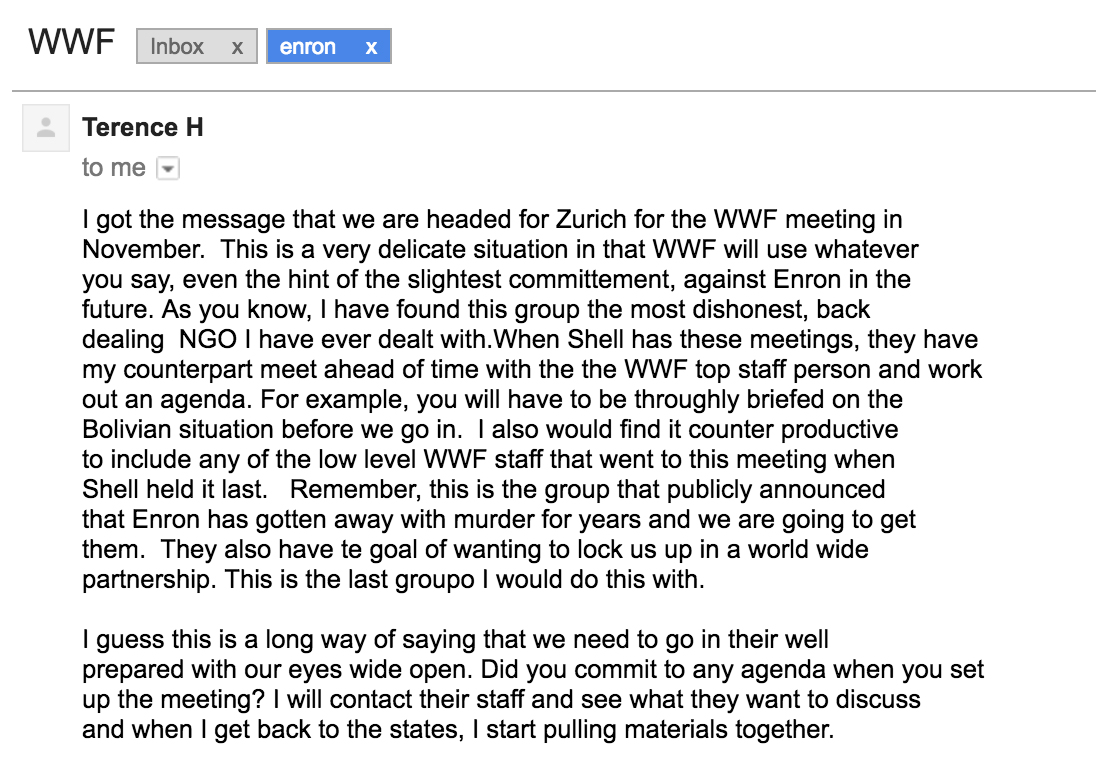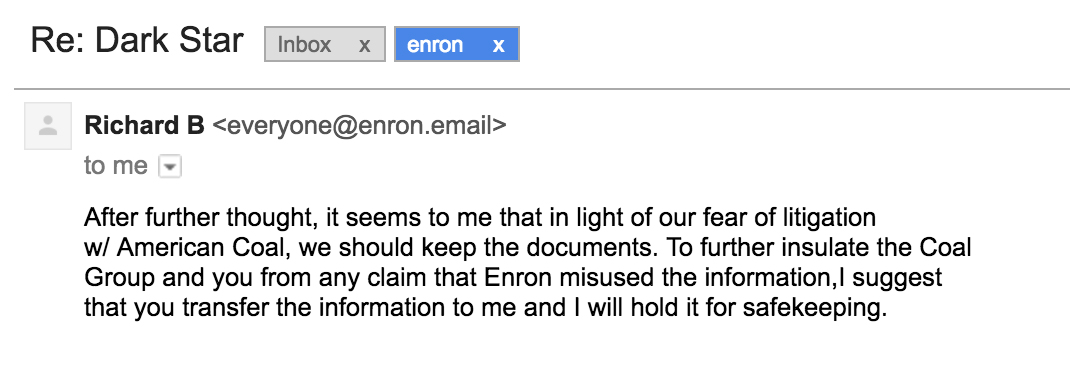Are you interested in reliving the entire plot of one of corporate America’s most notorious dramas, played out in all its spectacular nuance, density, and seeming triviality?
Let’s set the scene: It’s early 2001. George W. Bush has recently been sworn into office. The Texas-based energy corporation Enron—named “America’s Most Innovative Company” six years running by Fortune magazine—raked in close to $101 billion the previous year, and as far as executives are concerned, they’re at the top of their game. According to a New York Times profile published later that year, “the world’s dominant energy trader appeared unstoppable… Its ties to the Bush administration assured that its views would be heard in Washington. Its sales, profits and stock were soaring.” In those last years of power before the dramatic downfall history has dubbed the Enron Scandal, which crescendoed into one of the largest bankruptcies in American corporate history, the corporation’s major players were basking in the glory of a perversely elaborate hoax.
Videos by VICE
Now, artists Tega Brain and Sam Lavigne, who previously brought us “Smell-Based Dating,” invite you to experience the ups and downs of The Good Life for yourself, by sending the entire archive of 500,000+ emails, exchanged between employees during Enron’s final years, straight into your inbox. You will receive the emails in chronological order, at a frequency of your choice: 16,000 emails a day for a month, 1,370 a day for year, or 196 a day over seven years, allowing you to experience a multitude of narratives in their original media. “We believe this to be the first email simulator of its kind,” the artists tell The Creators Project. “When the project first launched we offered our users a five-day plan (100,000 emails per day). This turned out to be surprisingly popular, causing us to be temporarily banned by Gmail and Yahoo and added to at least one list of spammers. Clearly, suddenly sending more than three million emails per day is usually something only spam accounts do.” Yes, it’s a commitment, but a unique way of digesting the archive; originally released by the government in 2003, it was the first open-access email data dump of this magnitude. It preserved specific language from a specific slice of society, something NYU’s Finn Brunton might say was “frozen in place like the ruins of Pompeii for future researchers.”

Screenshot from The Good Life, Tega Brain and Sam Lavigne, 2016
The perspective of the overwhelmingly white, male, upper-class demographic represented in the archive frames a body of communications that, as the artists write for Rhizome, “encompasses a wide gamut of human emotion and activity. They document tedious office politics, relentless meeting scheduling, deeply embarrassing romantic drama, misogynist jokes, chain-emails, reflections on life as a corporate executive [in the 2000s] and, of course, revelations of large-scale corporate malfeasance and fraud.” This comprehensive yet highly biased dataset became one of the first significant records of real, unregulated contemporary American correspondence available to the public on the internet, enabling groundbreaking early developments in linguistics and communications, spam filters, anti-fraud software, machine learning systems, natural language processing, various analytic systems—even Apple’s Siri (read more on MIT’s Technology Review). The fact is, Enron’s club of corporate criminals had a larger impact than anyone could have predicted, influencing algorithms that affect various technologies, the way we encounter online content, and the artificial intelligence that increasingly touches our lives. What we are faced with is a startlingly profound portrait of Bush Era power structures, moonlighting as a vital technical resource for the digital age.
The Good Life is a troubling but darkly amusing archive, a nostalgic retrospective of a ruddier time where willful corruption, widespread fraud, and the unethical irreverence of America’s corporate culture had not yet seen its comeuppance. Brain and Lavigne explain, “The emails provide a unique glimpse into that particular culture. They are representative of the Bush years, and of the aggressive nature of American business where environmental regulations are thwarted, authorities are bribed, and honesty and integrity is sacrificed in the name of profit… We are witness to devastating inequality born out of a culture that prioritizes stock prices over all other metrics and a government that allows corporate malfeasance to go unchecked. Enron is prescient of the unregulated corporate nightmare in which we now live.”

Screenshot from The Good Life, Tega Brain and Sam Lavigne, 2016
To live The Good Life yourself, click here.
Related:
17 Years of Scam Emails Ignite an Exhibition at MIT
Here’s an Art Gallery That Might End Up in Your Spam Folder
Screenwriter’s Block? This Artificially Intelligent Algorithm Could Help




